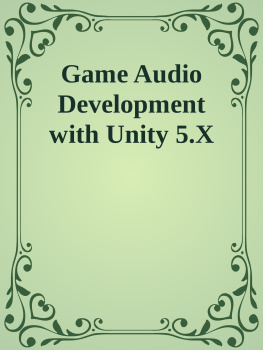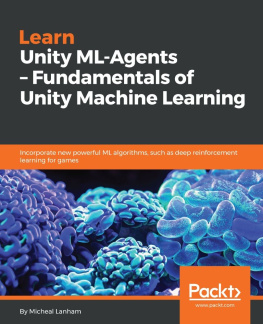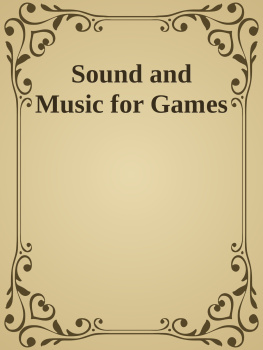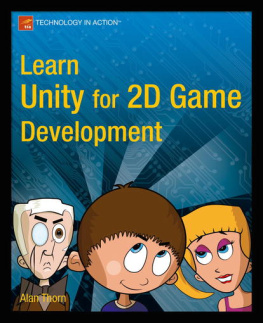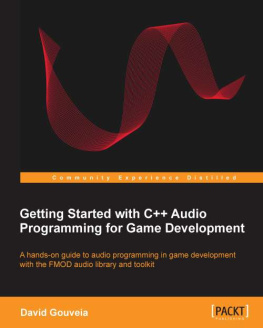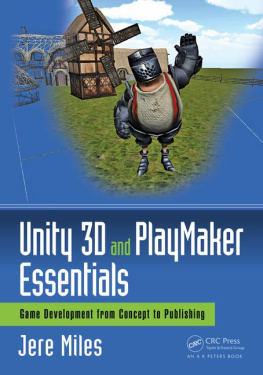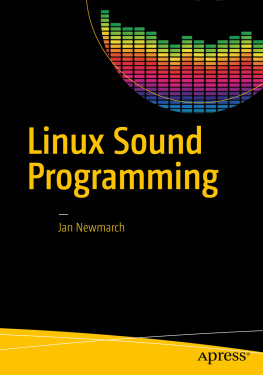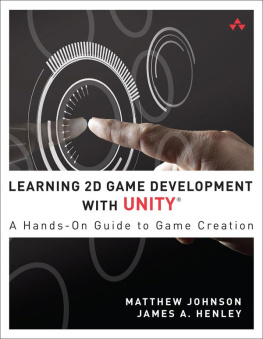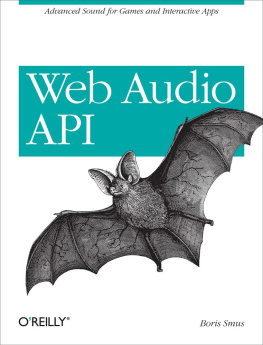Micheal Lanham - Game Audio Development with Unity 5.X
Here you can read online Micheal Lanham - Game Audio Development with Unity 5.X full text of the book (entire story) in english for free. Download pdf and epub, get meaning, cover and reviews about this ebook. City: Birmingham, year: 2017, publisher: Packt Publishing, genre: Computer / Science. Description of the work, (preface) as well as reviews are available. Best literature library LitArk.com created for fans of good reading and offers a wide selection of genres:
Romance novel
Science fiction
Adventure
Detective
Science
History
Home and family
Prose
Art
Politics
Computer
Non-fiction
Religion
Business
Children
Humor
Choose a favorite category and find really read worthwhile books. Enjoy immersion in the world of imagination, feel the emotions of the characters or learn something new for yourself, make an fascinating discovery.
- Book:Game Audio Development with Unity 5.X
- Author:
- Publisher:Packt Publishing
- Genre:
- Year:2017
- City:Birmingham
- Rating:3 / 5
- Favourites:Add to favourites
- Your mark:
Game Audio Development with Unity 5.X: summary, description and annotation
We offer to read an annotation, description, summary or preface (depends on what the author of the book "Game Audio Development with Unity 5.X" wrote himself). If you haven't found the necessary information about the book — write in the comments, we will try to find it.
In this book, we will take you through a step by step journey which will teach you to implement original and engaging soundtracks and SFX with Unity 5.x. You will be firstly introduced to the basics of game audio and sound development in Unity. After going through the core topics of audio development: audio sources, spatial sound, mixing, effects, and more; you will then have the option of delving deeper into more advanced topics like dynamic and adaptive audio. You will also learn to develop dynamic and adaptive audio using the Unity Audio Mixer. Further, you will learn how professional third party tools like FMOD are used for audio development in Unity. You will then go through the creation of sound visualization techniques and creating your own original music using the simple yet powerful audio workstation Reaper. Lastly, you will go through tips, techniques and strategies to help you optimize game audio performance or troubleshoot issues.
At the end of the book, youll have gained the skills to implement professional sound and music. Along with a good base knowledge audio and music principles you can apply across a range of other game development tools.
Micheal Lanham: author's other books
Who wrote Game Audio Development with Unity 5.X? Find out the surname, the name of the author of the book and a list of all author's works by series.

